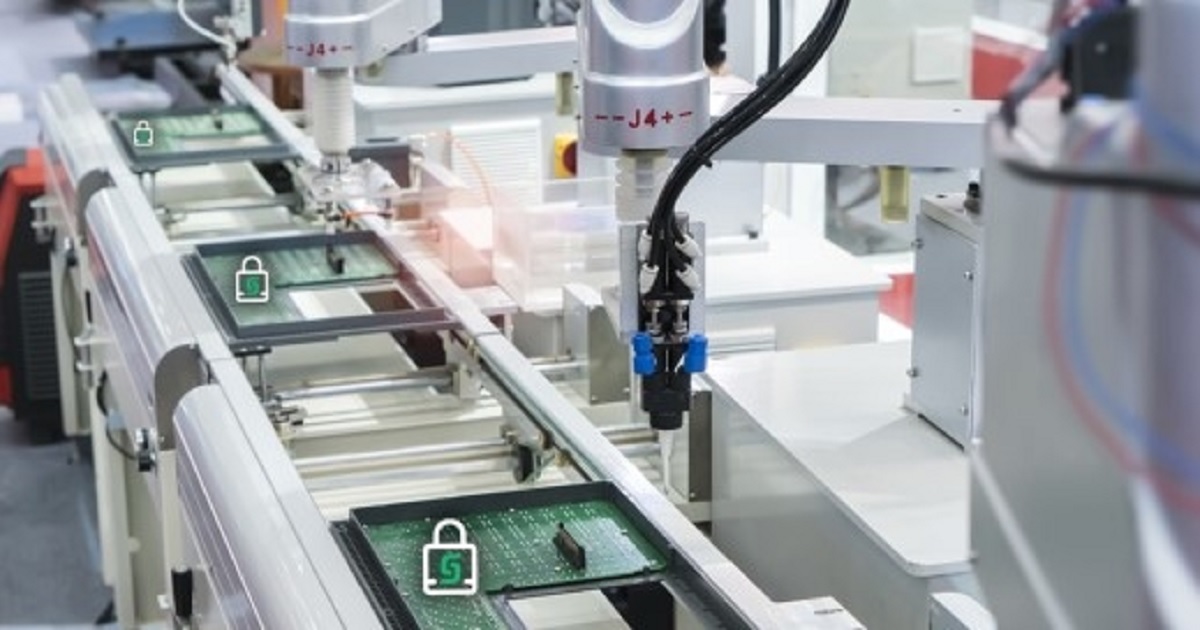
IoT Security
Article | June 28, 2023
Explore the IoT security solutions for critical issues and proactive solutions for the safe implementation of connected devices. Delve into cross-domain interactions for secure data storage.
Contents
1. Introduction
1.1 Significance of IoT Security for Safe Implementation
2. IoT Security Landscape
2.1 Emerging Threats in IoT Environments
2.2 Importance of Proactive Security Measures
3. Challenges Posed in IoT Systems
3.1 Cross-Domain Interactions
3.2 Denial of Service (DoS) Attacks
3.3 Insecure Interfaces and APIs
3.4 Vulnerable Third-Party Components
3.5 Safeguarding Data Storage and Retention
4. Solutions to Prevent Threats
4.1 Secure Integration and Communication
4.2 Traffic Monitoring and Analysis
4.3 Robust Authentication and Authorization Protocols
4.4 Patch Management and Vulnerability Monitoring
4.5 Access Control and User Authentication
5 Conclusion
1. Introduction
1.1 Significance of IoT Security for Safe Implementation
The significance of IoT connectivity and security for safe implementation is paramount in today's interconnected world. Some essential points highlight its importance at both the business and advanced levels. IoT devices collect and transmit vast amounts of sensitive data. Without proper security measures, this data can be intercepted, leading to breaches of privacy and potential misuse of personal or corporate information. Implementing robust IoT security ensures the protection of data throughout its lifecycle. Safeguarding Critical Infrastructure is crucial as Many IoT deployments are integrated into critical infrastructure systems such as power grids, transportation networks, and healthcare facilities. A breach in the security of these interconnected systems can have severe consequences, including disruption of services, financial losses, and even threats to public safety. IoT security helps mitigate these risks by preventing unauthorized access and potential attacks.
Mitigating financial losses, ensuring operational continuity and preventing IoT botnets and DDoS attacks contribute to security as IoT devices are often integrated into complex ecosystems, supporting various business operations. In recent years, compromised IoT devices have been used to create massive botnets for launching distributed denial-of-service (DDoS) attacks. These attacks can overwhelm networks and cause significant disruptions, affecting the targeted businesses and the internet infrastructure as a whole. Robust IoT security measures, such as strong authentication and regular device updates, can help prevent these attacks.
2. IoT Security Landscape
2.1 Emerging Threats in IoT Environments
Botnets and DDoS Attacks
Botnets, consisting of compromised IoT devices, can be leveraged to launch massive distributed denial-of-service (DDoS) attacks. These attacks overwhelm networks, rendering them inaccessible and causing disruptions to critical services.
Inadequate Authentication and Authorization
Weak or non-existent authentication and authorization mechanisms in IoT devices can allow unauthorized access to sensitive data or control of connected systems. This can lead to unauthorized manipulation, data breaches, and privacy violations.
Firmware and Software Vulnerabilities
IoT devices often rely on firmware and software components that may contain vulnerabilities. Attackers can exploit these weaknesses to gain unauthorized access, execute malicious code, or extract sensitive information.
Lack of Encryption and Data Integrity
Insufficient or absent encryption mechanisms in IoT communications can expose sensitive data to interception and tampering. Without data integrity safeguards, malicious actors can modify data transmitted between devices, compromising the integrity and reliability of the system.
Physical Attacks and Tampering
IoT devices deployed in public or accessible locations are vulnerable to physical attacks. These attacks include tampering, theft, or destruction of devices, which can disrupt services, compromise data, or manipulate the functioning of the IoT ecosystem.
Insider Threats
Insiders with authorized access to IoT systems, such as employees or contractors, may abuse their privileges or inadvertently introduce vulnerabilities. This can include unauthorized access to sensitive data, intentional manipulation of systems, or unintentional actions compromising security.
Supply Chain Risks
The complex and global nature of IoT device supply chains introduces potential risks. Malicious actors can exploit vulnerabilities in the manufacturing or distribution process, implanting backdoors or tampering with devices before they reach end-users.
2.2 Importance of Proactive Security Measures
Security measures are vital for ensuring the safety and reliability of IoT environments. Organizations can mitigate risks and stay ahead of potential vulnerabilities and threats by taking a proactive approach. These measures include conducting regular vulnerability assessments, implementing robust monitoring and detection systems, and practicing incident response preparedness. Proactive security measures also promote a 'Security by Design' approach, integrating security controls from the outset of IoT development. Compliance with regulations, safeguarding data privacy, and achieving long-term cost savings are additional benefits of proactive security. Being proactive enables organizations to minimize the impact of security incidents, protect sensitive data, and maintain their IoT systems' secure and reliable operation.
3. Challenges Posed in IoT Systems
3.1 Cross-Domain Interactions
Cross-domain interactions refer to the communication and interaction between IoT devices, systems, or networks that operate in different domains or environments. These interactions occur when IoT devices need to connect and exchange data with external systems, platforms, or networks beyond their immediate domain. Incompatibilities in protocols, communication standards, or authentication mechanisms can create vulnerabilities and potential entry points for attackers.
3.2 Denial of Service (DoS) Attacks
Denial of Service attacks are malicious activities aimed at disrupting or rendering a target system, network, or service unavailable to its intended users. In a DoS attack, the attacker overwhelms the targeted infrastructure with an excessive amount of traffic or resource requests, causing a significant degradation in performance or a complete service outage. Protecting IoT devices and networks from DoS attacks that aim to disrupt their normal operation by overwhelming them with excessive traffic or resource requests becomes challenging. The issue here lies in distinguishing legitimate traffic from malicious traffic, as attackers constantly evolve their techniques.
3.3 Insecure Interfaces and APIs
Insecure interfaces and application programming interfaces (APIs) refer to vulnerabilities or weaknesses in the interfaces and APIs used by IoT devices for communication and data exchange. An interface is a point of interaction between different components or systems, while an API allows applications to communicate with each other. Insecure interfaces and APIs can be exploited by attackers to gain unauthorized access to IoT devices or intercept sensitive data. Ensuring secure authentication and authorization mechanisms, proper encryption of data in transit, and secure storage of API keys and credentials, thus, becomes a challenge.
3.4 Vulnerable Third-Party Components
Vulnerable third-party components refer to software, libraries, frameworks, or modules developed and maintained by external parties and integrated into IoT devices or systems. These components may contain security vulnerabilities that attackers can exploit to gain unauthorized access, manipulate data, or compromise the overall security of the IoT ecosystem. Pain points arise from the challenge of assessing the security of third-party components, as organizations may have limited visibility into their development processes or dependencies.
3.5 Safeguarding Data Storage and Retention
Data storage and retention refers to the management and security of data collected and generated by IoT devices throughout its lifecycle. Safeguarding stored IoT data throughout its lifecycle, including secure storage, proper data retention policies, and protection against unauthorized access or data leakage, poses a threat. Ensuring secure storage infrastructure, protecting data at rest and in transit, and defining appropriate data retention policies include safeguarding data and maintaining the privacy of stored data. Failure to implementing strong encryption, access controls, and monitoring mechanisms to protect stored IoT data leads to this issue.
4. Solutions to Prevent Threatsc
4.1 Secure Integration and Communication
Implement secure communication protocols, such as transport layer security (TLS) or virtual private networks (VPNs), to ensure encrypted and authenticated communication between IoT devices and external systems. Regularly assess and monitor the security posture of third-party integrations and cloud services to identify and mitigate potential vulnerabilities. Organizations need to invest time and resources in thoroughly understanding and implementing secure integration practices to mitigate the risks associated with cross-domain interactions.
4.2 Traffic Monitoring and Analysis
Deploy network traffic monitoring and filtering mechanisms to detect and block suspicious traffic patterns. Implement rate limiting, traffic shaping, or access control measures to prevent excessive requests from overwhelming IoT devices. Utilize distributed denial of service (DDoS) mitigation services or hardware appliances to handle volumetric attacks. Organizations must deploy robust traffic analysis and anomaly detection mechanisms to identify and mitigate DoS attacks promptly. Additionally, scaling infrastructure and implementing load-balancing mechanisms become essential to handle sudden surges in traffic during an attack.
4.3 Robust Authentication and Authorization Protocols
Apply secure coding practices and implement strong authentication and authorization mechanisms for interfaces and APIs. Utilize secure communication protocols (e.g., HTTPS) and enforce strict access controls to prevent unauthorized access. Regularly update and patch interfaces and APIs to address any known vulnerabilities. Organizations must conduct regular security audits of their interfaces and APIs, implement strong access controls, and regularly update and patch vulnerabilities to address these effectively.
4.4 Patch Management and Vulnerability Monitoring
Conduct thorough security assessments of third-party components before integration, verifying their security track record and ensuring they are regularly updated with security patches. Establish a process for monitoring and addressing vulnerabilities in third-party components, including timely patching or replacement. Establishing strict vendor evaluation criteria, conducting regular security assessments, and maintaining an up-to-date inventory of third-party components can help address these issues and mitigate the risks associated with vulnerable components.
4.5 Access Control and User Authentication
Encrypt stored IoT data to protect it from unauthorized access or leakage. Implement access controls and user authentication mechanisms to restrict data access based on role or privilege. Establish data retention policies that comply with relevant regulations and securely dispose of data when no longer needed. Clear data retention policies should be established, specifying how long data should be stored and when it should be securely deleted or anonymized to minimize data leakage risks.
It's important to note that these solutions should be tailored to specific organizational requirements and constantly evaluated and updated as new threats and vulnerabilities emerge in the IoT security landscape.
5. Conclusion
Ensuring the safe implementation of IoT requires overcoming various security challenges through proactive measures and a comprehensive approach. By implementing proactive security measures, organizations can mitigate risks and maintain the safety and reliability of IoT environments. Overcoming these challenges requires organizations to invest in certain integration practices, traffic analysis, authentication mechanisms, encryption protocols, and vendor evaluation criteria. Overcoming IoT security challenges for safe implementation necessitates a proactive and comprehensive approach encompassing vulnerability management, monitoring and detection, incident response preparedness, secure design practices, compliance with regulations, and robust data storage and retention mechanisms.
The emergence in IoT security encompasses the incorporation of machine learning and AI for improved threat detection, the application of blockchain for secure transactions and device authentication, the integration of security measures at the edge through edge computing, the establishment of standardized protocols and regulatory frameworks, the adoption of advanced authentication methods, and the automation of security processes for efficient IoT security management. These trends aim to address evolving risks, safeguard data integrity and privacy, and enable IoT systems' safe and secure implementation.
Read More

IoT Security
Article | July 5, 2023
Tech companies are stepping up Internet of Things technologies to protect against COVID-19 and future viruses by using LiDAR and infrared cameras to detect a person’s body temperature from a distance or even handwashing. Keeping the data secure in such detection is also going to be a challenge. One approach is to put a chip inside an IoT device when it is manufactured to enable strong authentication and secure communication, mainly to guard against device counterfeiting. Hitachi Vantara has touted forward looking infrared cameras (FLIR) cameras to detect the temperature of a person from a distance. That way a passenger on a train or a worker or a customer in a store can be non-intrusively screened, according to a blog from Mark Jules, global vice president of smart spaces and video intelligence.
Read More

IoT Security
Article | June 27, 2023
As development teams race to build out AI tools, it is becoming increasingly common to train algorithms on edge devices. Federated learning, a subset of distributed machine learning, is a relatively new approach that allows companies to improve their AI tools without explicitly accessing raw user data. Conceived by Google in 2017, federated learning is a decentralized learning model through which algorithms are trained on edge devices. In regard to Google’s “on-device machine learning” approach, the search giant pushed their predictive text algorithm to Android devices, aggregated the data and sent a summary of the new knowledge back to a central server. To protect the integrity of the user data, this data was either delivered via homomorphic encryption or differential privacy, which is the practice of adding noise to the data in order to obfuscate the results.
Read More

Article | January 29, 2021
If you’re struggling with creating a value proposition in volatile markets, you’re not alone. According to Neil Patel, 40% of marketers struggle to acquire leads by traditional marketing methods. As competition grows in each industry, even fairly monopolistic markets like tech are seeing rising competition in all areas.
To combat market uncertainty, as well as stand out amongst your competitors, you need a market strategy that not only offers a direction but actively targets your goals. A market strategy is your go-to plan when things get rough and it is a map for when the waters are calm. Moreover, marketers with a documented strategy are 313% more likely to report success.
We’re sure you already have a market strategy that is just right for you. But have you considered if it can be refined further? Thanks to emerging technologies like IoT, we now have access to the most mundane customer decisions that are taken on a day-to-day basis. This data is your ticket to a better market strategy without having to spend a bomb.
This is how you can refine your market strategy with the help of IoT.
Data-driven Decisions
The Internet of Things has offered us insurmountable amounts of consumer data. A caffeine brand can now access information such as what time consumers have coffee, whether it is at home or office, what flavors they prefer, how much they’re willing to spend on coffee, and what other alternatives they consume. This kind of data, collected on an IoT device such as a coffee machine, is instrumental in making marketing decisions. If you know that your consumer prefers to have coffee at work in peace rather than in a rush at home, you can target offices in the area with your product rather than targeting individual consumers.
IoT offers you the right information to make the right decisions. But you can also leverage this data to drive your market strategy. In the above example, the marketing team can account for campaigns geared towards workplaces based on the available data in the budget. Data-driven strategies prove to be more effective than otherwise, and as marketers, you must absolutely leverage any IoT data that may be relevant.
Respect your Customers
While IoT offers marketers a truly astounding amount of data, not all users are aware of what data is being tracked. This raises concerns for privacy and security among the users. Even though most of the users waive their rights to withhold the information when signing into an app or wearables software, they are not always comfortable sharing certain data.
As marketers, it is important to keep your practices ethical and legal. Using consumer data may be completely legal, but it is best not to offend your customers by overt use of data that they aren’t comfortable sharing. Make sure that the usage of data in marketing campaigns and strategy is limited to what data has been consciously shared by your consumers. This will bolster your goodwill, as well as make your customers trust your brand.
Offer Valuable Solutions
With the advent of Big Data and AI technologies, the internet of things is turning over a new leaf. As there is a vast amount of data that can be processed fast with AI, marketers can now target individuals rather than households or groups. With precise data available over consumer decisions and actions, it is possible to know if there are any unlikely customers that you have been ignoring so far.
IoT allows you to not only target these customers but also solve their problems. If we continue the caffeine example, the connected coffee machine can tell you when the coffee is about to be over, this can send you reminders to buy coffee, or in case of further automation, place an order on Amazon on your behalf. These solutions can be now hyper-personalized to suit individual needs through IoT.
IoT Based Campaigns
Your market strategy will have to account for campaigns throughout the year, but if you’ve noticed closely, the only marketing campaigns that gain significant traction are the ones that have a ‘wow factor’. A lot of marketers mistake the wow factor to be a subjective preference that customers have but it couldn’t be further from the truth. The wow factor is simply the effect produced when a business goes above and beyond to meet customer needs. IoT offers us the resources required to manufacture the wow factor in every single campaign.
A great example of this phenomenon is beacon marketing. Beacon marketing is considerably new in the marketing industry and uses Bluetooth technology to transmit information to nearby mobile devices. It is heavily used in retail across the globe and giants like Target and Walmart are already using the technology to market its services. Walmart places beacons in its lights across its stores and sends offers to its customers based on their location. It not only personalizes the shopping experience, but also saves a large amount of electricity bill for its stores.
Target Existing Customers
Many times, in a bid to appease new customers, marketers often forget about their existing customers. Your existing customers already know you, have tried your product or service, and are clearly interested in the product. A good product or service is often enough to keep the customers returning, but with the current levels of competition, customers often find themselves wondering if they should try new things. As a marketer, all you need to do is deter your existing customers from straying. You can do this by either providing an unparalleled service, which is quite unlikely in today’s market, or you give them a reason to stay.
Thankfully, targeting existing customers is much easier than targeting new ones. You already have their data over their preferences and habits. If you know that a certain firm updates their applications every second quarter, you can send them offers just before the second quarter starts and remain fresh in their memories when they decide to make the decision.
Allergy medication Zyrtec leveraged IoT when targeting their existing customers with a voice-enable application. Its users could just ask the application about the daily allergens and pollutants in their area so they could prepare ahead. The app offered a powerful solution to its users while making great use of its brand image and retaining almost all of their existing customers.
Leverage New Technologies
We have already discussed several complementary technologies to IoT that can help you make the most out of your market strategy. AI and Big Data are some of the strongest allies for IoT that can help change the norms across industries. But even limited technologies like voice-enabled applications, QR scanners, beacons and so can open up a lot of opportunities for marketers.
Consider adopting some of these technologies such as geofencing which are inexpensive and effective at the same time. Burger King is a great example of using geofencing for marketing. Geofencing is a technology wherein you can transmit messages or information to mobile devices within a certain area. Burger King set up their geofences across all McDonalds in the UK and as soon as anyone entered within a 500 m radius of a McDonald’s outlet, they received Burger King coupons and directions to the nearest store.
Case Studies
There are a lot of examples of IoT being used to enhance strategies or campaigns. Some of these examples are given below.
Diageo, a whisky brand in Brazil innovatively used IoT to run a father’s day campaign. They encouraged men to buy whisky for their fathers and placed a QR code on their bottles. Once the bottle was received, the fathers could scan the code which would play a personalized father’s day message by their sons. This concept was so loved by people in Brazil that Diageo saw a 72% sales uplift in the two weeks leading up to Father’s Day.
South East Water, CRM leveraged IoT by building an end-to-end IoT ecosystem powered by IBM’s Maximo. This helped them roll out an app that offered near real-time insights into customer requirements for over 80 engineering teams. This alone helped them ensure higher customer satisfaction and accelerated access to critical reports by 99 percent!
Uber and Spotify rolled out an IoT campaign together wherein you could access your Spotify playlists through the Uber app and once you were in an Uber, you could play whatever you liked through the app and it would play on the car’s speakers. This increased customer satisfaction for both Uber and Spotify users.
There are several examples of using IoT in marketing campaigns, and there is never a dearth of ideas. However, in order to appeal to your unique customer base, you need to innovate your product with IoT.
Frequently Asked Questions
What is the IoT strategy?
IoT Strategy refers to an organization’s strategy to inculcate IoT in their business, whether as a marketing tool or as an integral part of the process.
How does IoT affect the marketing industry?
IoT offers a lot of insights and resources to marketers which helps them target their customers better and optimizes any marketing efforts, thereby effectively obliterating traditional marketing practices.
What is the best internet of things marketing strategy?
There is no one IoT marketing strategy that fits all businesses. Each business needs to identify its customer requirements and strategize accordingly.
{
"@context": "https://schema.org",
"@type": "FAQPage",
"mainEntity": [{
"@type": "Question",
"name": "What is the IoT strategy?",
"acceptedAnswer": {
"@type": "Answer",
"text": "IoT Strategy refers to an organization’s strategy to inculcate IoT in their business, whether as a marketing tool or as an integral part of the process."
}
},{
"@type": "Question",
"name": "How does IoT affect the marketing industry?",
"acceptedAnswer": {
"@type": "Answer",
"text": "IoT offers a lot of insights and resources to marketers which helps them target their customers better and optimizes any marketing efforts, thereby effectively obliterating traditional marketing practices."
}
},{
"@type": "Question",
"name": "What is the best internet of things marketing strategy?",
"acceptedAnswer": {
"@type": "Answer",
"text": "There is no one IoT marketing strategy that fits all businesses. Each business needs to identify its customer requirements and strategize accordingly."
}
}]
}
Read More